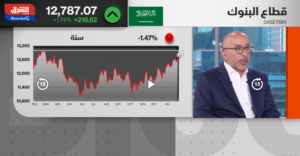As rates return to ‘normal’, stock market investors need to look deeper for real value
The market narrative is perplexing to say the least over the last year. Traditional number crunching has suggested investing in stocks or bonds did not work at all, as the ‘everything bubble’ imploded, leaving investors with significant losses.
On the other hand, Janus Henderson’s Global Dividend index measure found that global dividends paid out hit a record, rising by 8.4 per cent. When factored in for exchange rate differentials, underlying dividends rose by an even more astonishing 13.9 per cent. When we look back at history, looking at the last time inflation was a global phenomenon, stocks gave a return of 5 per cent, suggesting that in the current environment, it might well be better off just to put your savings in fixed deposits.
Analysts warn that past losses do not matter and future returns are what is to be focused on. Where shares have fallen the most is where naturally, there should be the greatest potential. Other parallels in history suggest that bonds and stocks traditionally move in opposite directions, and hence any dour outlook for world economies augurs well for fixed-income securities.
What are investors to do?
One of the key factors is that the starting point matters as much as a predictor for future returns. Even after their big falls, global stocks still look very expensive compared to their counterparts in emerging markets. Buying stocks when their earnings multiples are in excess of 20 or even 30, is surely a recipe for substandard returns, a lesson that investors learnt after the dotcom bubble burst in 2001.
Realistic about yields
This is compounded for companies that continue to lose money but have, for some reason, captured the imagination of investors. In an environment of zero interest rates, there were few alternatives and hence riskier propositions were fair game. As investors return to a ‘full return’ world, where interest rates are above 4 per cent on the 10-year yield – and above 5 per cent on the shorter end of the spectrum – the belief that ‘trees would grow to the sky’ philosophy has given way to more realistic assumptions.
With the consequence that there has been a steady outflow from the tech sector and into areas where companies have performed more predictably, and delivered performances that include dividends. In the last bull run, dividends didn’t matter at all, but as global data shows, these returns to investors have become paramount in the composition of portfolios.
As investor psychology continues to change, what is clear is that there is an increased emphasis on shareholder returns that can finance debt that consumer households have taken on (earlier largely financed through capital gains).
Growth delivered by the ‘city’ too
In the UAE, the resurgence of capital market activity has had strong underpinnings of attractive valuations and a high emphasis on dividends. Companies like Salik and Empower have not only outperformed local and global benchmarks, but have done so without touching upon their per unit revenue metrics (tollgates in the case of Salik, and tariff rates in the case of Empower).
Rather, the growth story has been driven by underlying population growth of the city and an increased velocity of movement and building, as the city continues to expand rapidly. This suggests considerable long-term upside potential even at current levels, as each of these companies look to monetize not only their data points but also as they increase their network coverage, locally and internationally.
Institutional fund managers that have started focusing on the growth drivers have steadily increased their exposure, and retail investors would do well to follow suit as macro sentiments continue to shape shift and add to the noise in the investment landscape.
Tech that augments actual returns
The true investor is defined by inactivity, rather than frenzied bouts of trading, and enjoys the underlying returns a business generates. Neither of the two mentioned companies come even close to the hitherto preferred technology space, yet both have actively invested in technology to augment and optimize their returns of capital.
Valuations remain below their regional and international competitors, indicating that there is room yet for inevitable long-term capital gains to accrue; a factor that is revealed by increasing international analyst coverage.
Of course, analysts would argue that in the end, the free market is the best allocator of money. We know however, that we haven’t had free markets in money allocation for well over a decade, which is what has led to the distortion in asset values. As things normalize, the cue from history is the shape of investment returns.
The current investment landscape shows that the local capital markets appear to be offering the greatest value for money. This is a seismic change in investor thought and the growing excitement is confirming the view that the capital markets revolution underway is permanent.
Sameer Lakhani
The writer is Managing Director of Global Capital Partners.





